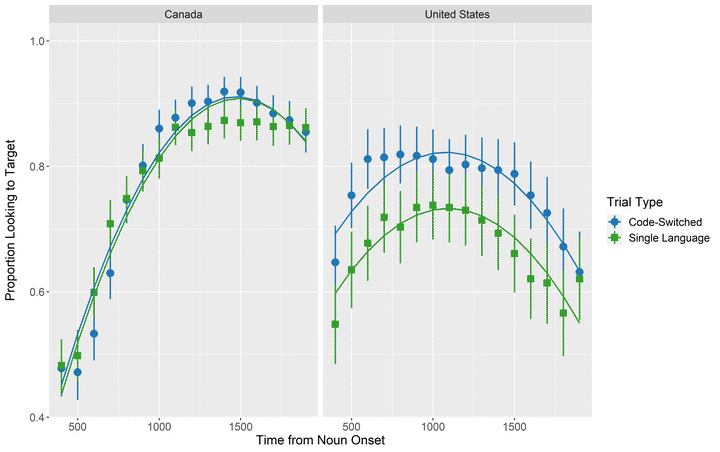Bilingual children’s comprehension of code-switching at an uninformative adjective

Abstract
Bilingual children hear sentences that contain words from both languages, also known as code-switching. Investigating how bilinguals process code-switching is a crucial component in understanding bilingual language acquisition, because young bilinguals experience processing costs and reduced comprehension when encountering code-switched nouns. Studies have yet to investigate if processing costs are present when children encounter code-switches at other parts of speech within a sentence. The current study examined how 30 young bilinguals (age range = 37 – 48 months) process sentences with code-switches at an uninformative adjective before the target noun (e.g., “Can you find le bon [the good] duck?) compared to single-language sentences (e.g., “Can you find the good duck?”). Surprisingly, bilingual children accurately identified the target object in both sentence types, contrasting with previous findings that sentences containing code-switching lead to processing difficulties. The functional information a code-switch carries may contribute to bilingual children’s sentence processing.